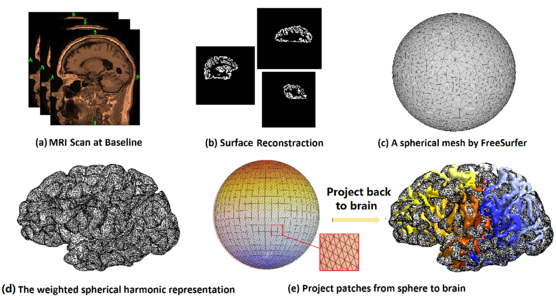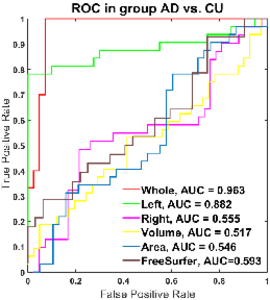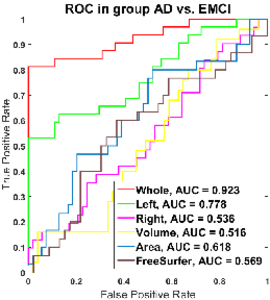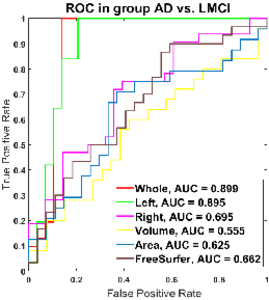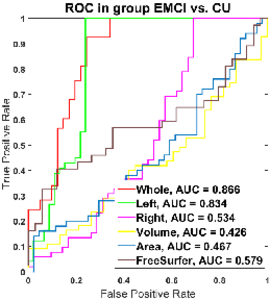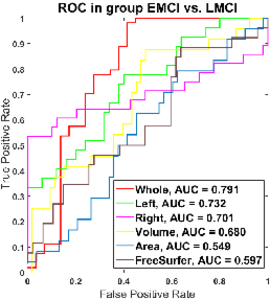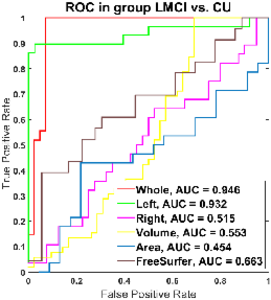Empowering Cortical Thickness Measures in Clinical Diagnosis of Alzheimer’s Disease with Spherical Sparse Coding
Jie Zhang, Yonghui Fan, Qingyang Li, Paul M. Thompson, Jieping Ye, Yalin Wang
Abstract
Cortical thickness estimation performed in vivo via magnetic resonance imaging (MRI) is an important technique for the diagnosis and understanding of the progression of Alzheimer’s disease (AD). Directly using raw cortical thickness measures as features with Support Vector Machine (SVM) for clinical group classification only yields modest results since brain areas are not equally atrophied during AD progression. Therefore, feature reduction is generally required to retain only the most relevant features for the final classification. In this paper, a spherical sparse coding and dictionary learning method is proposed and it achieves relatively high classification results on publicly available data from the Alzheimer’s Disease Neuroimaging Initiative (ADNI) 2 dataset (
Figures (click on each for a larger version):
Related Publications
- Jie Zhang, Yonghui Fan, Qingyang Li, Paul M. Thompson, Jieping Ye, Yalin Wang, Empowering Cortical Thickness Measures in Clinical Diagnosis of Alzheimer’s Disease with Spherical Sparse Coding, 2017 IEEE 14th International Symposium on Biomedical Imaging (ISBI), Accepted
